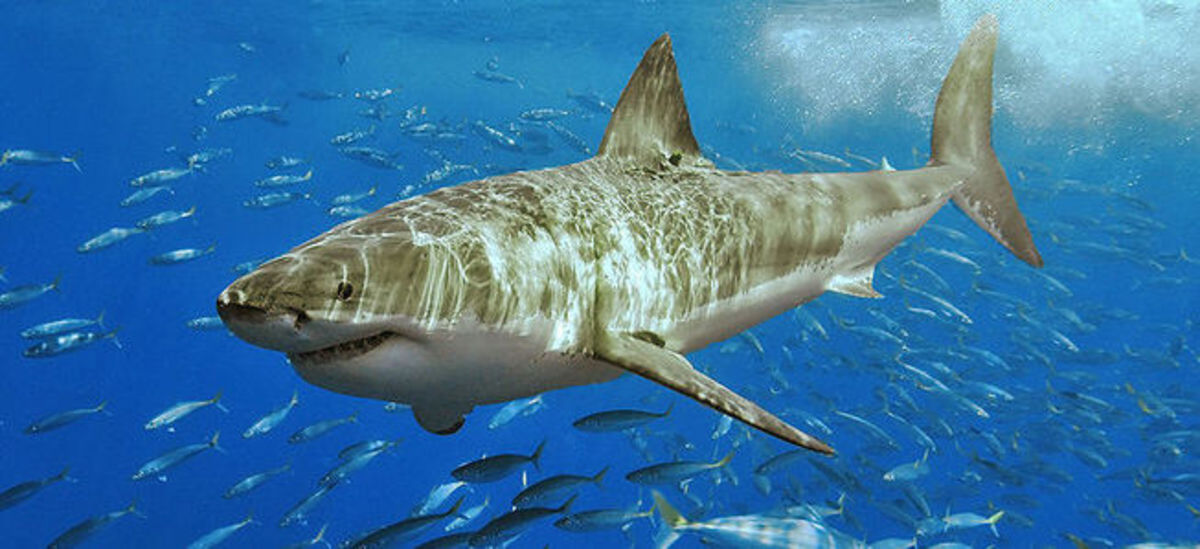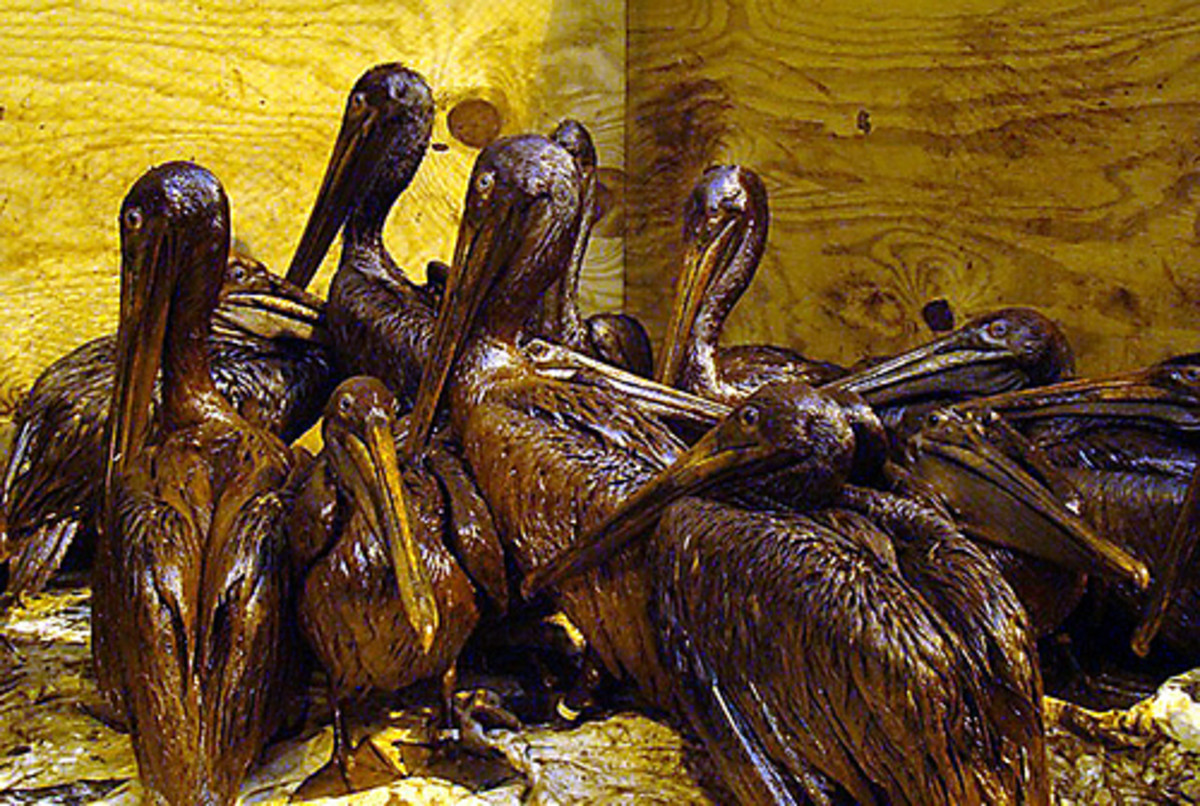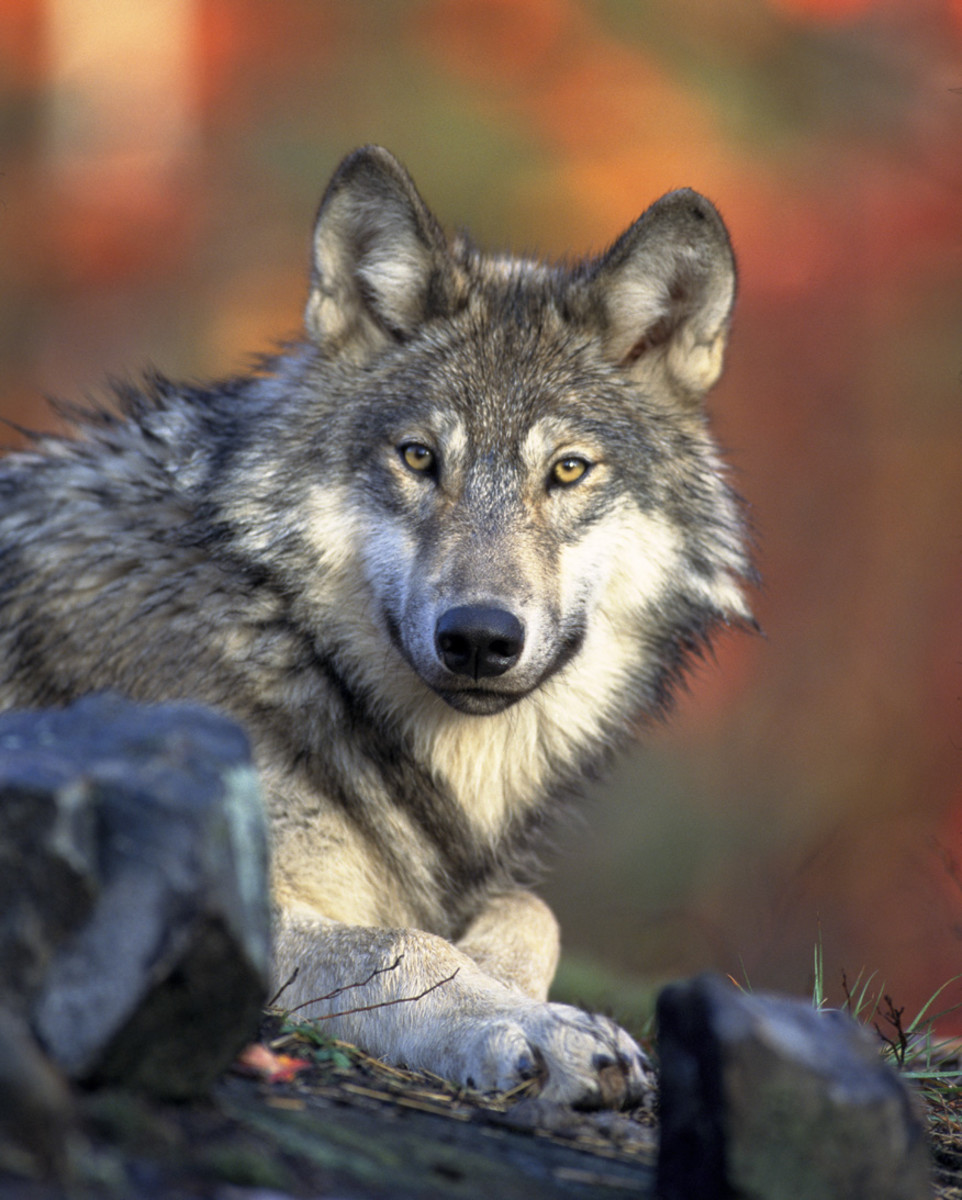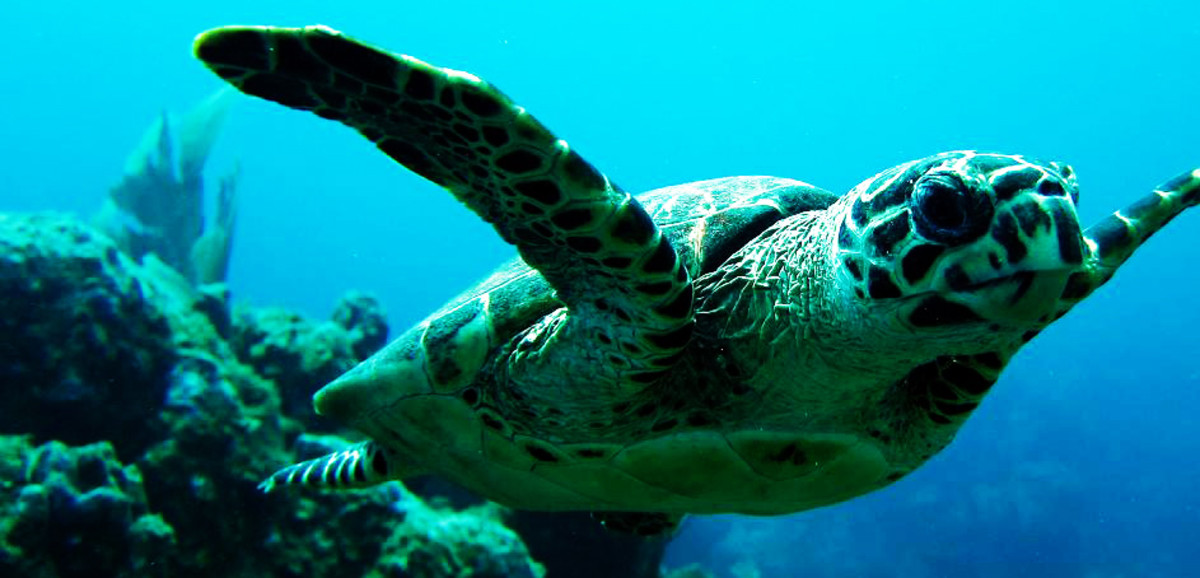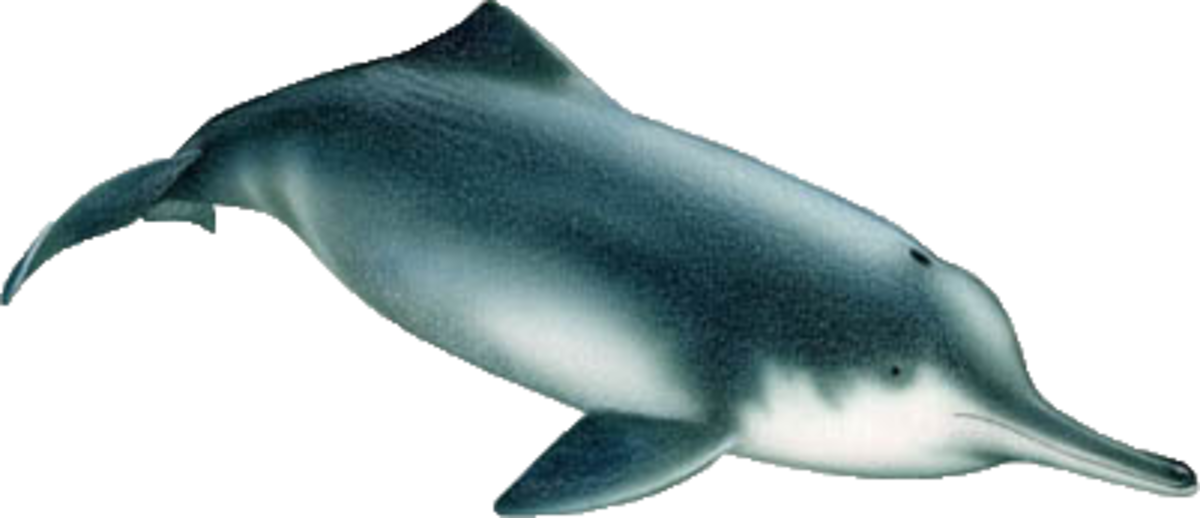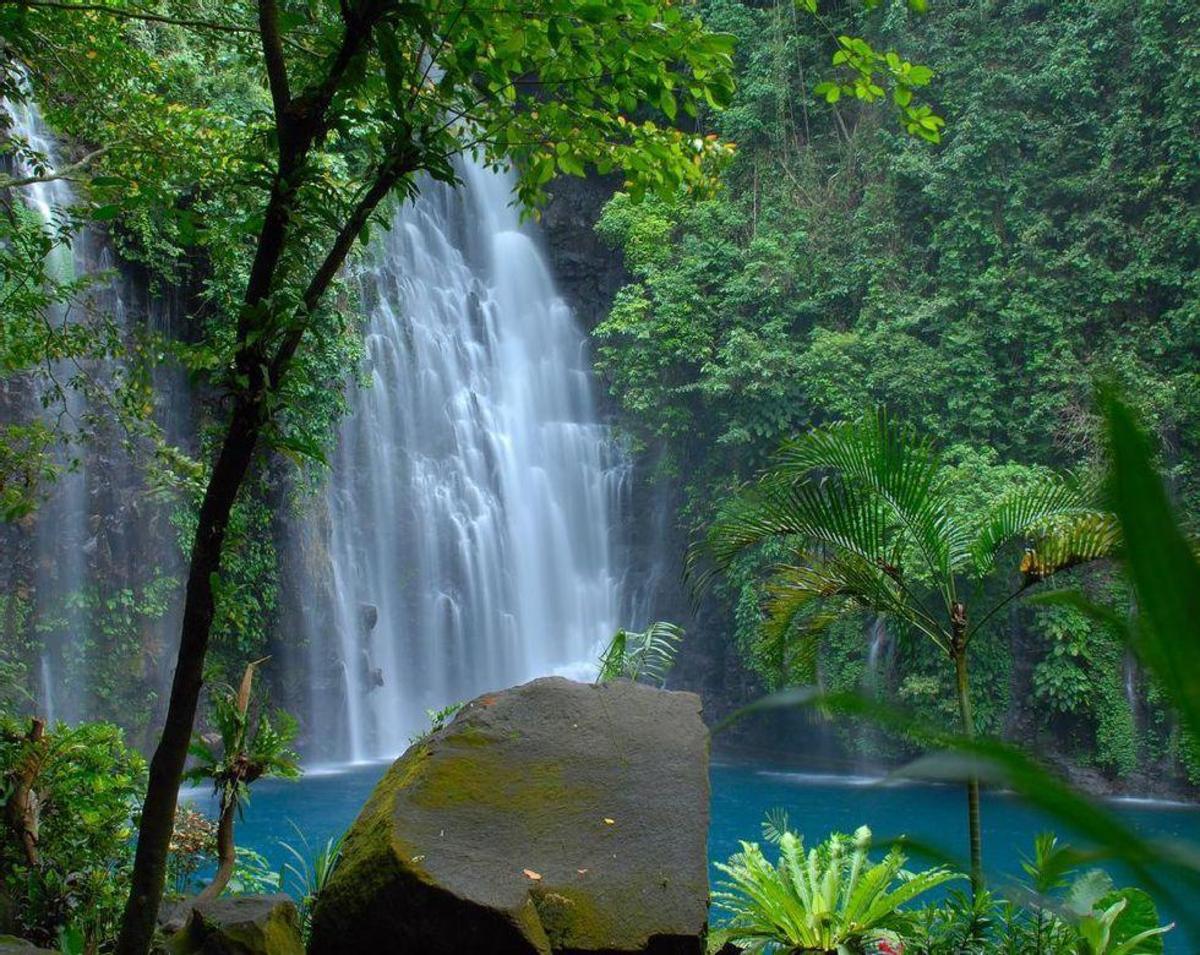- HubPages»
- Education and Science»
- Life Sciences»
- Endangered Species
Endangered Species - Endangered Marine Animal Species Of The World
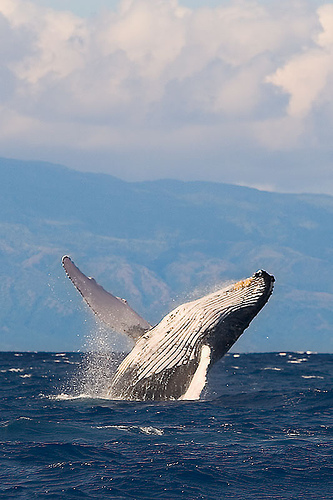
Endangered Marine Animal Species
The world's oceans and the creatures that inhabit them are in trouble.
Over the past few centuries, technology has advanced at a rapid rate, and our ability to influence the natural ecosystems of the world has increased in kind. As our tools became more and more sophisticated and our population grew ever larger, the natural world began to feel the impact of increased food demands and newer and more efficient means of extracting natural resources from the environment.
In the process, Whales and Dolphins were hunted almost to extinction, and demand for consumer goods saw the mass harvesting of many Marine Turtle, Fish and Seal species for their skins, shells and oils, as well as their meat and other body parts.
Today, we are beginning to shift our focus away from taking from the environment as if it held an endless supply of goods for our consumption, and towards a knowledge that the only way to maintain the gifts of nature is to conserve them at a sustainable level. Hopefully it isn't too late to prevent the extinction of the marine animals that keep the ocean's ecosystem functioning.
There are far too many species at risk to be listed here, so I've
highlighted just one animal each from among the many Whales, Porpoises,
Fish, Turtles and Seals that are currently endangered
and/or threatened
with extinction.
The causes behind these threats are varied, but
the most significant threats are related to human activity, both past
and present.
In the case of Whales, Fish and Turtles, direct
hunting and killing for use of their body parts has been a threat for
centuries, and the affects of those threats are now taking their
long-term toll.
- Whales of many species have been so over-hunted that it is unlikely that they will ever regain their historical population levels
- Many fish species, including various Shark species, have been hunted for sport and in a misguided attempt at "safety", as well as for their body parts
- Marine Turtle populations continue to decline worldwide, mainly due to the harvesting of their eggs, but also because of sea front development and intentional killing for their shells
Seals and Porpoises are threatened mostly by accidental by-catch in
large commercial fishing interests. In addition to being indirectly
affected by fishing gear, competition for resources in natural fisheries
between fisherman and wildlife is resulting in declining food sources
for the predatory animals like Seals and Porpoises that live in those fisheries.
All
of the marine animal species listed here are considered "Endangered" by
the The International Union for Conservation of Nature (IUCN) as
well as the United States Fish and Wildlife Service.


Endangered Species List

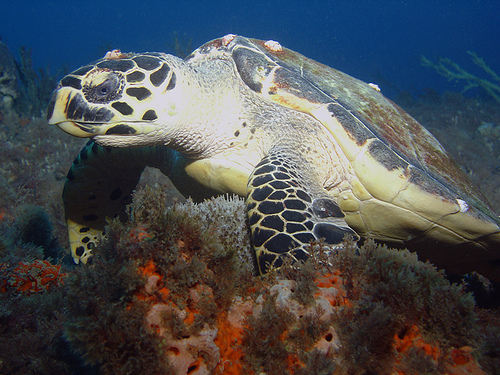
Hawksbill Turtle
Latin Name: Eretmochelys imbricata
Description: The Hawksbill Turtle's range includes the tropical regions of all the world's oceans, gulfs and seas. The females come ashore to lay their eggs at the beaches where they were born. Every 2-3 years the females return and nest for 14-16 days, and maintain multiple nests which can contain over 100 eggs.
It is estimated that the world-wide Hawksbill population has declined by 80% over the last century. The animals are frequently killed for their meat and shells, which are heavily trafficked in the tourist trade in tropical regions all over the world. Harvesting of the turtle's eggs is banned in many countries, but not all, and even where egg harvesting is banned it continues to be practiced. And since these animals feed primarily on coral reef species, the degradation of coral reefs around the world is contributing to the shocking decline in their population.
The same threats that endanger the Hawksbill Turtle also affect many other sea turtles, including the Green Turtle, Leatherback Turtle and Ridley Turtles. Since most marine turtles spend the majority of their lives in the open ocean, little is known about their life-cycles, but it is believed that many species take decades to reach maturity and can live for a hundred years or more. The 2010 BP oil spill in the Gulf of Mexico only makes the survival of these endangered species even more unlikely,
Photo from http://www.flickr.com/photos/54556732@N00/ / CC BY-SA 2.0

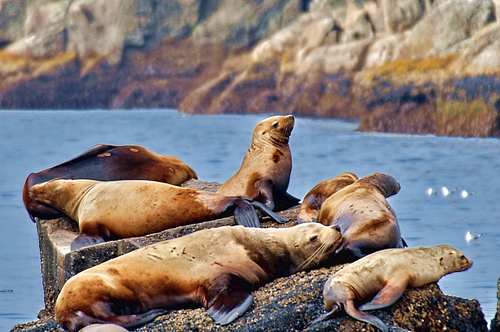
Stellar Sea Lion
Latin Name: Eumetopias jubatus
Description: The Stellar Sea Lion inhabits the cold coastal waters of the North Pacific and is the largest member of the Otariid (eared seal) family and the fourth largest of all seal species.
The worldwide population of Stellar Sea Lions has declined by more than 60% since the 1960s, due to both natural and man-made threats. The natural threat is mainly predation by Killer Whales, and that threat has been exacerbated by the human-caused threats to the species. The human threats include accidental death in fishing gear and subsistence harvesting by Native Alaskans and Canadians, who take 150 to 300 animals per year for their meat, oil, hides and other by-products.
Probably the greatest threat to the Stellar Sea Lion is competition with the fishing industry. In the early 20th century, they were intentionally killed by fishermen, who even placed bounties on the animals for stealing "their" fish. The rapid increase in fishing within the sea lions' habitat over the subsequent hundred years has diminished the available amount of prey for the animals, and their population has been declining as a result. The current worldwide population is less than 120,000 and dropping.
Photo from http://www.flickr.com/photos/dlbezaire/ / CC BY-SA 2.0

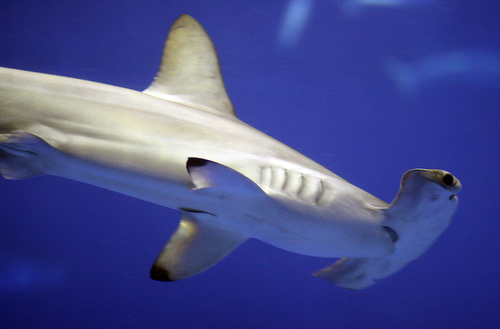
Hammerhead Shark
Latin Name: Sphyrna mokarran
Description: The range of the Hammerhead Shark covers all tropical regions of the world's oceans. Hammerhead Sharks are killed both legally and illegally, intentionally and accidentally, all over the globe. They are often caught unintentionally in long-line fishing gear, but many fisherman specifically hunt down the Hammerhead purely for its fins. Shark finning is a horrible and highly destructive practice - the fish are caught, dragged on-board and their fins are cut off while the shark is still alive. The rest of the carcass is usually tossed overboard and the shark bleeds to death in the process. The fins are then sold for use in Shark Fin soup, a delicacy in many Asian countries, where the fins of the Hammerhead are prized above those of other shark species.
The cruel practice of shark finning is banned in many countries, but that ban has done little to stop the trade in shark fins. Even where the ban is in place, sharks captured as by-catch by otherwise law-abiding fisherman are often still finned. The strong demand and high price paid in the Asian market virtually ensure that few sharks caught by accident will ever survive.
Photo from http://www.flickr.com/photos/erikcharlton/ / CC BY 2.0

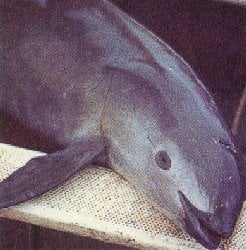
Gulf of California Harbor Porpoise (Vaquita)
Latin Name: Phocoena sinus
Description: The world's smallest and most endangered cetacean, the Vaquita exists only in shallow, murky waters off the coast of the Baja Peninsula in Mexico. The species wasn't even identified by western science until 1958, and was likely more widespread before that time. During the 1920s, extensive gill-netting was used to fish for a now-endangered species of large sea bass, and the Vaquita was frequently caught in the process.
The Vaquita population has been declining since the 1940s, and even though the gill-netting ended in the 1970s the population continues to decline by as much as 15% per year. Current estimates put the entire population at just 500-600 individuals, and it is likely that the species will become extinct in the next few decades if current rates of decline continue.
Photo from WikiCommons / CC BY 3.0

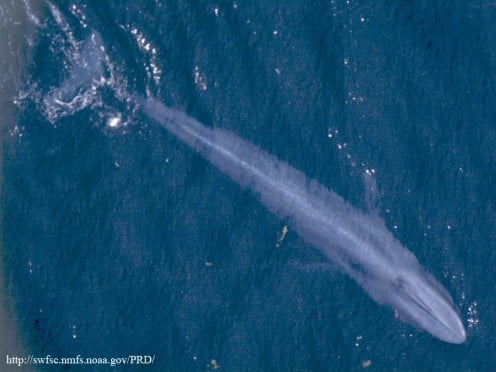
Blue Whale
Latin Name: Balaenoptera musculus
Description:
The largest animals to have ever lived on Earth, the Blue Whale has
been hunted nearly to extinction. Due to their enormous size, these
whales were relatively safe from commercial hunting until the 20th century. In
previous eras, these whales were simply too large to be hunted in the
small, slow ships of the time. During the 20th century, bigger, faster
whaling ships were available, and the Blue Whale became a target for
commercial hunting. Even after an international ban was instituted in
1966, some illegal hunting continued. Today, there is no known Blue
Whale hunting activity anywhere in the world, but the damage has been
done.
These migratory whales range from both poles in all the
world's oceans. Before large scale commercial hunting, the worldwide
population of Blue Whales was at least 200,000 animals (based on the
number that were killed). Today the global population is somewhere
between 3,000 and 5,000 surviving whales. These severely reduced
populations still face threats, both natural and man-made, but
conservation efforts are ongoing. It is unlikely that the population
will ever return to its historic levels.
Photo in the Public Domain from NOAA; source

Humpback Whale photo from http://www.flickr.com/photos/erikogan/ / CC BY-SA 2.0

Some Organizations That Are Trying To Help Endangered Species Of The Oceans
- Ocean Conservancy: Home
Here at Ocean Conservancy, we believe it's time to look beneath the surface to see where the health of our planet really begins. It's time to start a sea change. Won't you join us? - Welcome to WWF - The World's global network
The World Wildlife Fund is a non-profit organization that works to protect and help the recovery of the world's endangered and threatened animal species. - IUCN - Home
IUCN, the International Union for Conservation of Nature, helps the world find pragmatic solutions to our most pressing environment and development challenges.
Read More Endangered Species Facts
- Endangered Species - Endangered Marine Animal Species Of The World
The world's oceans and the creatures that inhabit it are in trouble. Read about one animal each from among the many Whales, Porpoises, Fish, Turtles and Seals that are currently endangered and/or threatened with extinction. The causes behind these... - World's Top 10 Endangered Species List
Because of human destruction of their habitats, tropical rain forest species are at the highest risk, as are top-of-the-food-chain carnivores, other species whose geographical range is already small, and marine coral reef species. Here are 10 of... - List of Top 10 Endangered Species in Asia
The rapid development of land for use by humans all over Asia poses a serious threat to many animal species, and many Asian governments do too little too late to protect their own environments. There are areas of improved awareness to the risks of... - North America Top 10 Endangered Species List
Many animals that once thrived in the wild on the North American Continent are now threatened with extinction. Beginning in 1973, the United States Interior Department, through the Fish and Wildlife Service, has been charged with protecting the...



